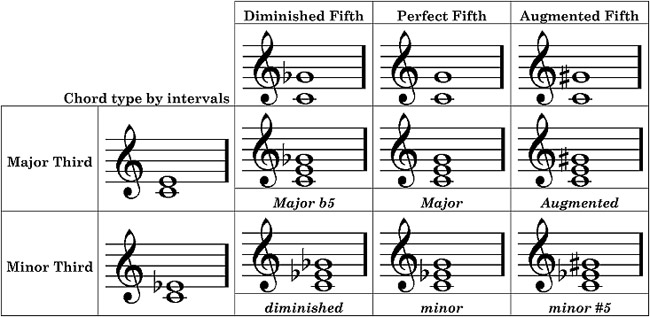Welcome, all you fellow six-string sorcerers, fretboard wizards, and pick-wielding prodigies! Today, we embark on a journey through the enigmatic world of chord theory, where the building blocks of our musical arsenal await to be discovered, decoded, and unleashed upon the unsuspecting ears of our audience. So grab your trusty ax, tune up those strings, and prepare to delve deep into the harmonious labyrinth that is the guitarist’s playground. Let’s unlock the secrets of chord theory and elevate our musical prowess to legendary heights!
Contents
- 1 Understanding the Foundation of Chords
- 2 The Role of Major and Minor Chords in Music Composition
- 3 Diving Deep into Seventh Chords: Varieties and Applications
- 4 Extended Chords and Their Place in Modern Music
- 5 Navigating Through Suspended and Added Tone Chords
- 6 Chord Progressions: Crafting the Backbone of a Song
- 7 Innovative Approaches to Voicing and Inversion Techniques
- 8 FAQs
- 9 Strumming Along to Success
Understanding the Foundation of Chords
So you think you know all about chords, huh? Well, let’s dive a little deeper into the foundation of these musical building blocks.
First off, let’s talk about the basics. Chords are made up of three or more notes played together to create harmony. These notes are usually taken from the scale of the key you’re playing in. So if you’re jamming out in the key of C Major, your chords will be made up of notes from the C Major scale.
Now, let’s break it down even further. There are different types of chords, including major, minor, diminished, and augmented chords. Each of these chords has a distinct sound and feeling, so it’s important to understand how they work together to create a killer melody.
Don’t forget about chord progressions! These are sequences of chords that are played one after the other to create a sense of musical movement. Mixing and matching different chords can lead to some interesting and unexpected combinations that will keep your audience on their toes.

The Role of Major and Minor Chords in Music Composition
When it comes to music composition, major and minor chords play a critical role in setting the mood and tone of a piece. Major chords are like the popular kids in school – they’re bright, happy, and full of sunshine. They’re the ones you want to hang out with on a Friday night, sipping on lemonade and playing games. Minor chords, on the other hand, are like the mysterious loners at the back of the class. They’re brooding, dark, and a little bit emo. They’re the ones who write poetry in their notebooks and wear all black to parties.
Major chords are the life of the party, striking up conversations with everyone in the room and spreading cheer wherever they go. They’re like a big, warm hug that makes you feel all fuzzy inside. Minor chords, on the other hand, are the ones who sit in a corner, sipping on their black coffee and contemplating the meaning of life. They add depth and complexity to a composition, bringing a touch of drama and intrigue to the mix.
When major and minor chords come together in a composition, it’s like a classic buddy cop movie - they may be total opposites, but they complement each other in the best possible way. Major chords provide the upbeat energy and catchy melodies, while minor chords add a touch of melancholy and sophistication. It’s a match made in music heaven, creating a harmonious blend of emotions that listeners can’t help but get lost in.
Diving Deep into Seventh Chords: Varieties and Applications
So you think you know everything about seventh chords, huh? Well, buckle up because we’re about to dive even deeper into this vast ocean of harmonic possibilities!
First up, let’s talk about the different varieties of seventh chords. We’ve got major sevenths, minor sevenths, dominant sevenths, half-diminished sevenths, and fully diminished sevenths. It’s like a smorgasbord of chords just waiting to be played!
Now, you might be wondering, “Where can I use these seventh chords?” Fear not, my fellow music enthusiast, for the applications are endless! Whether you’re looking to add some jazziness to a blues progression or spice up a pop ballad, seventh chords are your best friend.
So next time you’re noodling around on your guitar or tinkering away on your piano, don’t be afraid to throw in some juicy seventh chords. You never know what kind of magic you might create!

Extended Chords and Their Place in Modern Music
Extended chords have become the secret sauce of modern music, adding that extra oomph to take a song from basic to banger status. These bad boys are like the cool cousins of regular chords, with a few extra notes thrown in for good measure. It’s like having a party and inviting the whole neighborhood – more notes, more fun!
In a world where everyone is trying to stand out, extended chords are the perfect way for musicians to flex their creativity. Why settle for plain old triads when you can have a jazzy seventh or a dreamy ninth? It’s like choosing between a basic hamburger and a gourmet burger with all the toppings – why go boring when you can go bold?
With extended chords, the possibilities are endless. From major ninths to thirteenths, musicians have a whole buffet of notes to play with. It’s like being a kid in a candy store, except instead of sweets, it’s musical notes that will make your ears sing. So next time you’re writing a song, don’t be afraid to spice it up with some extended chords - your audience will thank you for it!
So you’re about to dive into the world of suspended and added tone chords, huh? Buckle up, because things are about to get funky!
First off, let’s talk about suspended chords. These bad boys are like that one friend who shows up uninvited to the party but ends up stealing the show. They add a whole new layer of tension and release to your music, making it sound oh-so-sweet. Think of them as the rebellious teenagers of the chord family – they break the rules but in the best way possible.
Now, onto added tone chords. These babies are like the crazy aunt that everyone secretly loves. They take a regular old chord and sprinkle it with some extra juicy notes, creating a deliciously complex sound that will make your listeners do a double-take. They’re the jazz hands of the chord world – flashy, fun, and impossible to ignore.
So strap in, grab your guitar or piano, and start experimenting with these suspended and added tone chords. Who knows, you might just stumble upon a musical masterpiece that will have everyone begging for an encore!
Chord Progressions: Crafting the Backbone of a Song
When it comes to crafting a killer song, you can’t underestimate the power of chord progressions. These musical building blocks are the unsung heroes of any great tune, providing the backbone that keeps everything together. Think of them as the musical equivalent of a good pair of Spanx – they hold everything in place and make you look damn good while doing it!
So, how do you go about creating the perfect chord progression? Well, you could always throw darts at a wall of musical theory terms and hope for the best. Or, you could take a more strategic approach and follow these tried-and-true tips:
- Experiment with different chord qualities: Don’t be afraid to mix things up with some major, minor, dominant, or even diminished chords. You never know what magic might happen!
- Move those chords around like they owe you money: Just because a chord progression starts on a C doesn’t mean it has to end there. Mix it up and keep your listeners on their toes!
- Embrace the weird: Sometimes the most interesting chord progressions come from stepping outside of the ordinary. Don’t be afraid to try something a little unconventional – your ears will thank you!
Remember, the possibilities are endless when it comes to crafting the perfect chord progression. So, grab your guitar, piano, or kazoo and start experimenting. Who knows, you might just stumble upon the next chart-topping hit!
Innovative Approaches to Voicing and Inversion Techniques
Exploring Different Ways to Amplify Your Musical Creativity
Are you tired of the same old boring voicing and inversion techniques? Looking for something fresh and exciting to spice up your musical compositions? Well, look no further! We’ve got some innovative approaches that will take your music to a whole new level.
Instead of sticking to the conventional methods, why not try experimenting with cluster voicings? Clusters are a great way to create dissonance and tension in your music, adding an element of surprise and intrigue. Just throw a bunch of notes together and see what kind of magic happens!
Or how about inverting your inversions? Yes, you heard that right! Take those inverted chords and flip them on their heads (literally). This unconventional approach will give your music a quirky and unconventional edge that is sure to turn heads.
And for those looking to really shake things up, why not try layering different voicing techniques? Mix and match clusters, inversions, and traditional chord voicings to create a rich and textured sound that will leave your audience begging for more. The possibilities are endless when it comes to amplifying your musical creativity!
FAQs
What are the basic building blocks of chord theory?
Think of chord theory as the Legos of music - the basic building blocks are the major and minor triads. These triads consist of three notes – the root, third, and fifth – and are essential for constructing more complex chords.
Why is understanding chord theory important for guitarists?
Well, unless you want to be stuck playing the same three-chord songs for the rest of your life, understanding chord theory is crucial. It allows you to unlock the endless possibilities of chord progressions and spice up your playing with some tasty embellishments.
How can guitarists apply chord theory in their playing?
By learning the relationships between different chords and how they interact with each other, guitarists can create more interesting and dynamic progressions. With a solid understanding of chord theory, you’ll be able to experiment with different voicings, inversions, and extensions to take your playing to the next level.
What are some common chord progressions that guitarists should know?
One classic progression that every guitarist should have in their arsenal is the I-IV-V progression. This simple yet powerful sequence is the backbone of countless songs across various genres. Additionally, familiarizing yourself with the circle of fifths can help you navigate through different keys and create seamless transitions between chords.
Strumming Along to Success
So there you have it, dear readers! The wonderful world of chord theory is now at your fingertips, ready to be plucked, strummed, and twisted into musical magic. Remember, the key to unlocking your full potential as a guitarist lies within these building blocks of music. So go forth, explore, experiment, and let your creativity run wild! And who knows, maybe one day you’ll be the one writing articles about chord theory for aspiring musicians. Rock on!



